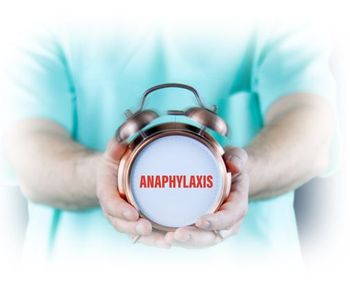
Spring Has Sprung: Mid-May Allergy Quiz
Try our seasonal potpourri of questions on when to avoid skin testing, the least preferred antihistamines, the worst conjunctivitis, and best add-on meds.
Question 1:
Answer on next page »
Answer: D. All of the above
Adverse reactions to skin testing for a specific allergen include local swelling, redness, pain, and itching. Such reactions may be complicated by skin diseases like eczema. Serious reactions like anaphylaxis and even death have occurred, though these events are extremely rare. Consequently, skin testing is contraindicated in patients with comorbid medical conditions that could compromise survival should anaphylaxis occur, such as uncontrolled or severe asthma, current beta blocker use, and/or severe and unstable cardiovascular disease.1
Next question »
Question 2:
Answer on next page »
Answer: B. Chlorpheniramine
The 2015 American Academy of Otolaryngology Head and Neck Surgery guidelines for allergic rhinitis provide a strong recommendation for the use of oral second-generation antihistamines, like fexofenadine, cetirizine, and loratadine. Second-generation oral antihistamines are preferred over first generation oral antihistamines, like chlorpheniramine, diphenhydramine and hydroxyzine. The latter are associated with mucosal drying, crossing the blood-brain barrier, and greater sedation.1
Next question »
Question 3:
Answer on next page »
Answer: C. Vernal keratoconjunctivitis
The differential diagnosis for allergic conjunctivitis includes infectious (bacterial or viral) conjunctivitis, chronic dry eye, preservative toxicity, giant papillary conjunctivitis, atopic keratoconjunctivitis, and vernal keratoconjunctivitis. The more benign conditions among these are preservative toxicity, infectious conjunctivitis, and giant papillary conjunctivitis (a reaction to foreign material like contact lenses). More serious, potentially vision-threatening conditions include atopic keratoconjunctivitis (characterized by eczema of the lids and skin), and vernal keratoconjunctivitis (due to chronic inflammation of the palpebral conjunctivae). Both conditions require referral to an ophthalmologist. Symptoms include photophobia, pain, abnormal pupillary exam, blurred vision not accounted for by watery eyes, unilateral eye symptoms, and red eyes.2
Next question »
Question 4:
Answer on next page »
Answer: E. Both A and B
According to 2015 American Academy of Otolaryngology Head and Neck Surgery guidelines for allergic rhinitis, either intranasal antihistamine or oxymetazoline can be added as a second medication in patients with inadequate response to intranasal corticosteroids. Oxymetazoline should be given for three days or less to prevent rebound nasal congestion. Oral antihistamines (due to conflicting evidence) and leukotriene receptor antagonists (due to evidence showing no additive benefit) should not be added.1
Next question »
Question 5:
Answer on next page »
Answer: C. Alcohol dependence/abuse
Local allergic rhinitis refers to a condition in which symptoms of nasal allergy occur without evidence of systemic atopy, such as a negative skin-prick test and nondetectable serum specific IgE antibodies. The condition can affect patients of all ages and ethnicities, but young females, those with a family history of atopy, and non-smokers seem to be affected more often. Local allergic rhinitis tends to worsen over time, and often is comorbid with conjunctivitis and/or asthma.3
References
1. Seidman MD, Gurgel RK, Lin SY, et al. Clinical practice guideline: Allergic rhinitis.
2. Gonzalez-Estrada A, Newton LP. Does allergic conjunctivitis always require prescription eyedrops?
3. Campo P, Salas M, Blanca-López N, et al. Local allergic rhinitis.
Newsletter
Enhance your clinical practice with the Patient Care newsletter, offering the latest evidence-based guidelines, diagnostic insights, and treatment strategies for primary care physicians.



























































































































































































































































































































